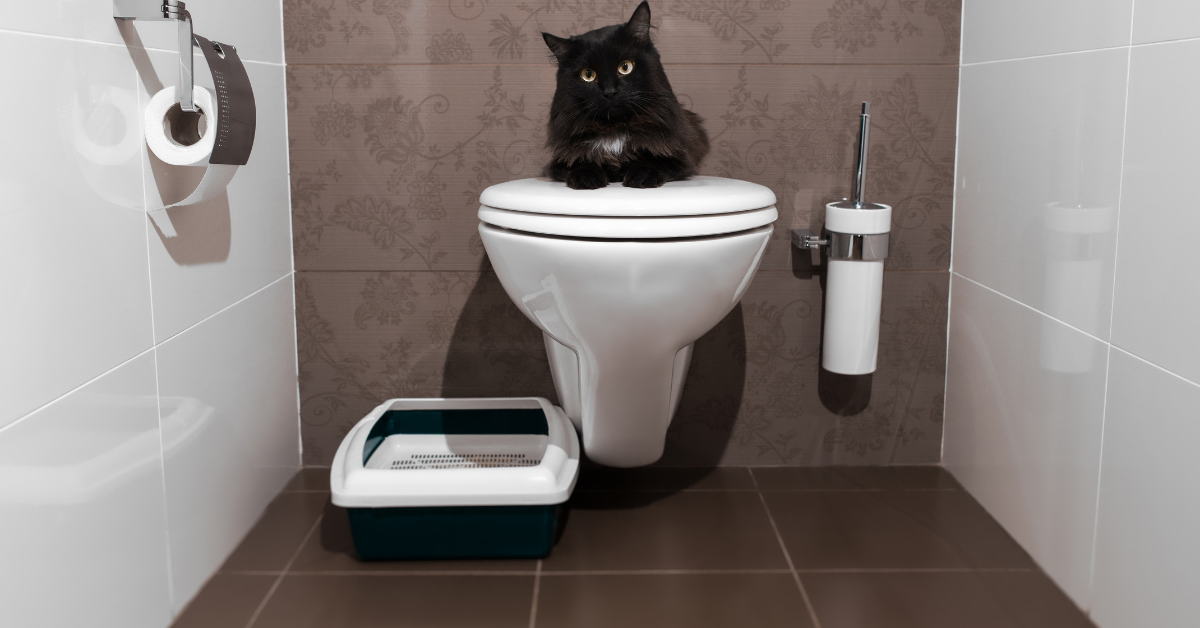Dangers of Flushing Cat Poop Down Your Toilet - Prevent Potential Issues
Dangers of Flushing Cat Poop Down Your Toilet - Prevent Potential Issues
Blog Article
This article down below in relation to Don’t flush cat feces down the toilet is absolutely enjoyable. You should take a peek.

Intro
As pet cat proprietors, it's important to be mindful of exactly how we get rid of our feline close friends' waste. While it may appear hassle-free to purge feline poop down the commode, this practice can have harmful effects for both the atmosphere and human health and wellness.
Alternatives to Flushing
Fortunately, there are much safer and extra responsible ways to take care of cat poop. Think about the adhering to options:
1. Scoop and Dispose in Trash
The most typical method of dealing with pet cat poop is to scoop it right into a biodegradable bag and toss it in the trash. Make certain to use a committed trash inside story and get rid of the waste promptly.
2. Use Biodegradable Litter
Go with naturally degradable pet cat litter made from materials such as corn or wheat. These clutters are eco-friendly and can be safely taken care of in the trash.
3. Bury in the Yard
If you have a lawn, think about hiding pet cat waste in a designated area away from vegetable gardens and water sources. Make sure to dig deep sufficient to stop contamination of groundwater.
4. Mount a Pet Waste Disposal System
Buy a pet dog garbage disposal system specifically made for cat waste. These systems use enzymes to break down the waste, reducing odor and ecological effect.
Wellness Risks
In addition to ecological problems, flushing cat waste can additionally present health and wellness risks to human beings. Cat feces might include Toxoplasma gondii, a parasite that can trigger toxoplasmosis-- a potentially serious illness, specifically for pregnant ladies and individuals with weakened body immune systems.
Environmental Impact
Purging cat poop presents dangerous pathogens and bloodsuckers right into the water system, presenting a significant danger to marine communities. These pollutants can adversely impact marine life and compromise water high quality.
Verdict
Responsible animal ownership prolongs beyond providing food and shelter-- it additionally includes correct waste monitoring. By avoiding purging feline poop down the toilet and choosing different disposal methods, we can minimize our ecological impact and protect human health and wellness.
Why Can’t I Flush Cat Poop?
It Spreads a Parasite
Cats are frequently infected with a parasite called toxoplasma gondii. The parasite causes an infection called toxoplasmosis. It is usually harmless to cats. The parasite only uses cat poop as a host for its eggs. Otherwise, the cat’s immune system usually keeps the infection at low enough levels to maintain its own health. But it does not stop the develop of eggs. These eggs are tiny and surprisingly tough. They may survive for a year before they begin to grow. But that’s the problem.
Our wastewater system is not designed to deal with toxoplasmosis eggs. Instead, most eggs will flush from your toilet into sewers and wastewater management plants. After the sewage is treated for many other harmful things in it, it is typically released into local rivers, lakes, or oceans. Here, the toxoplasmosis eggs can find new hosts, including starfish, crabs, otters, and many other wildlife. For many, this is a significant risk to their health. Toxoplasmosis can also end up infecting water sources that are important for agriculture, which means our deer, pigs, and sheep can get infected too.
Is There Risk to Humans?
There can be a risk to human life from flushing cat poop down the toilet. If you do so, the parasites from your cat’s poop can end up in shellfish, game animals, or livestock. If this meat is then served raw or undercooked, the people who eat it can get sick.
In fact, according to the CDC, 40 million people in the United States are infected with toxoplasma gondii. They get it from exposure to infected seafood, or from some kind of cat poop contamination, like drinking from a stream that is contaminated or touching anything that has come into contact with cat poop. That includes just cleaning a cat litter box.
Most people who get infected with these parasites will not develop any symptoms. However, for pregnant women or for those with compromised immune systems, the parasite can cause severe health problems.
How to Handle Cat Poop
The best way to handle cat poop is actually to clean the box more often. The eggs that the parasite sheds will not become active until one to five days after the cat poops. That means that if you clean daily, you’re much less likely to come into direct contact with infectious eggs.
That said, always dispose of cat poop in the garbage and not down the toilet. Wash your hands before and after you clean the litter box, and bring the bag of poop right outside to your garbage bins.
https://trenchlesssolutionsusa.com/why-cant-i-flush-cat-poop/

We are very fascinated with How to Dispose of Cat Poop and Litter Without Plastic Bags and I am hoping you liked the new page. Are you aware of somebody who is occupied with the subject? Feel free to share it. I value reading our article about Can You Flush Cat Poop Down The Toilet?.
Rates Report this page